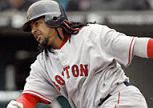| |
|
Who
is Paula C.? ¿Quién es Paula C? Part 1
|
|
| English
y español |
| Part
1: All about Paula How they met |
|
|
| Part
2: "Paula C" Fania Records |
| Part
3: Friends of Papa Egoro |
| |
| Part
4: By Sandra Lafuente P. |
| Part 5: Q&A, Comments |
| Home |
|
All
material
Copyright 2007-2015 MAESTRAVIDA.COM, Alison Weinstock & Paula C- |
| Pictures
are exclusive, and the sole property of P.C. and MAESTRAVIDA.com.
Unauthorized copying and public use is NOT ALLOWED under copyright laws. Estas fotos son propiedad exclusiva de P.C y Maestravida.com. Copias no autorizadas y su uso publico es estrictamente prohibido bajo la ley de derechos reservados. |
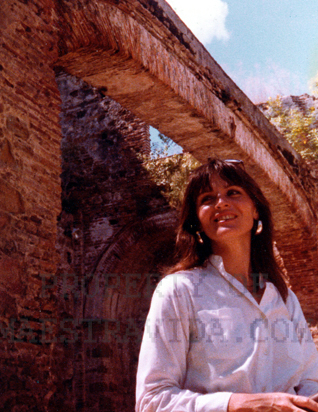 Panama Viejo |
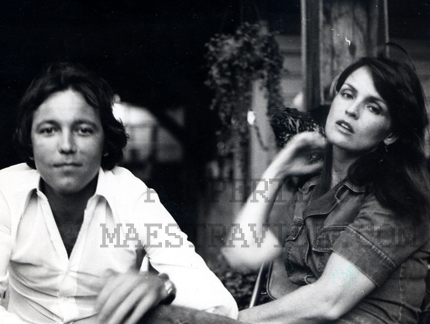 Summer 1976, he was 28, she was 32
|
|||
| 1. Who is Paula C? Where are you from, what education, what work do you do, and did you do then? | 1.
¿Quién es Paula C.? ¿De dónde eres?
¿Cuál es tu educación? ¿A qué te
dedicas y
a qué te dedicabas entonces? |
|||
|
Now I work for an executive recruitment firm that has a client base of media, entertainment publishers and technology companies. |
Crecí
en Boston, Massachussets, y soy
descendiente de irlandeses en Estados Unidos.
Mi madre fue maestra y mi padre doctor en medicina. Soy la menor
de cinco hijos. Cuando era joven mis padres visitaban Cuba
frecuentemente y solían traer discos y producciones musicales.
Así que crecí
escuchando aquellas fabulosas orquestas cubanas. El mambo era el ritmo
de moda
de entonces y mi familia solía bailar aquellos discos, alrededor
de la sala
principal de la casa, como locos. Creo
que el gran Machito tiene una hija llamada Paula – algo que de
niña me
encantaba. Acudí a la universidad y recibí una licenciatura en Literatura Inglesa y Filosofía para posteriormente mudarme a la ciudad de Nueva York. Originalmente me desempeñé como trabajadora social en el oeste del barrio Harlem, pero hacia el final de la década de los años 70 y principio de los años 80 trabajé para Liberty House, una cooperativa de manualidades que fue creada durante la época de mayor auge del movimiento de libertades civiles, en la década de los años 60. En ese entonces se vendían manualidades hechas por individuos que los activistas del movimiento conocían durante sus viajes por el sur de Estados Unidos. Las manualidades eran maravillosas pero en muchos casos necesitaban ser rediseñadas y mercadeadas para atraer a una mayor clientela, así que trabajábamos con los artesanos para lograrlo. Diseñé una línea de ropa femenina para la tienda, como parte de mi contribución hacia la cooperativa. Muchos famosos de la época fueron compradores de la tienda, incluyendo a John Lennon y Yoko Ono, Julie Christie y, el amor de nuestras vidas, el asombroso actor Raúl Julia. Mi Amiga Cathy Hawkins continúa al frente de la tienda como gerente, la cual ahora está localizada en el West 112th Street y Broadway. Ahora trabajo para una firma de reclutamiento ejecutivo cuya base de clientes es conformada por empresas relacionadas con los medios de comunicación, publicistas para la industria del entretenimiento y la tecnología. |
|||
|
|
|||
| 2. When and how did you meet Ruben? How did he seem to you then, as an artist and writer? He was always an ambitious artist, did everyone take him seriously? | 2. ¿Cuándo y cómo conociste a Rubén? ¿Qué te pareció como artista y compositor? Siempre fue un artista ambicioso, ¿Fue tomado en serio por todo el mundo? | |||
I actually met Ruben in Liberty House. At that time the store was located on Broadway and West 84 Street and he was living on West 86th Street. The store was in a building that had a parking garage on the side street. A friend of mine Karen (the daughter of a Rumba champion I might add) also worked in the store and she was dating the bass player for Mongo Santamaria. Mongo parked his van in the garage and sometimes would come into the store as we also sold a wonderful collection of African instruments. It was great fun when Mongo came in - he was a cheerful soul and he would play all the instruments and then flirt with everyone. The parking of Mongo’s van usually fell to his road guy Ralphie, who was a sweet person and real character. When Ralphie parked the van he usually hit the wall and all of our merchandise went flying off the shelves, so we got to know Ralphie really well. It was Ralphie who asked me if I had ever heard of the Panamanian singer Ruben Blades - I told him “no.” He asked me if I ever went to the local salsa clubs, like Barney Googles and the Corso? I told him “no.” About two weeks later Ruben came into the store to meet the “Italian girl named Paula” that Ralphie told him was “a big fan of his.” I guess that was about 1975. At that time Ruben was singing with Raymond [Barretto] and as an artist - he was trying to be a working musician and support himself. He wrote a great deal of music, sang coro on recordings and performed to earn his living. It wasn’t that he was so ambitious as much as he was clear about his goals and confident that he would be successful - and he single-mindedly pursued that. And he worked very hard. He told me when I first met him that he was going to be a famous singer and then go to Hollywood and make movies. I remember thinking that he may be delusional. One thing he did right from the start at Fania was to give the major artists at the time like Ismael Miranda some of his songs to record, so before he was really known as a singer he was appreciated as a composer within the company. It was his composing that got him taken seriously by Fania. I remember about Ismael in particular because he was the first singer who gave Ruben public credit for the song when he performed and Ruben never forgot that. I have always felt that Ruben was a composer who sang - rather than the other way around. People constantly called saying “I need a good tune.” That’s exactly what happened with El Cantante, Willie called him because Hector had been found OD in a car and needed a “good tune” to help him with a comeback. Ruben at first didn’t want to give him that tune - but I convinced him to do it. I adored Hector and it was a big joke between us because in fact Hector Lavoe was my favorite singer - still is. Whenever he performed I made sure I went to see him. One time when the All Stars were at Madison Square Garden, Ruben came and got me from the audience and brought me back stage - which I hated - what a scene! Without a word, he marches me over to where Hector was leaning against a door. When we get there he says to me “who is your favorite singer”? I respond Hector Lavoe. Hector smiles slightly not knowing what’s going on and then Ruben says “Hector - do you know who this is - this is my girlfriend Paula.” Then Hector really started to laugh his head off. I was mortified but in retrospect, it was a very generous gesture by Ruben. He and Hector were rivals in the business at that time. By the time Ruben came to New York he already was a well known singer in Panama. His mother Anoland, a musician herself, didn’t approve of his singing and was always pushing him to finish his degree. She knew all too well how difficult a musician’s life could be. One year during Carnival - she told me that as far as she knew Ruben had agreed not to sing while he was at the University. But one day while driving to her job in the Canal Zone - there was this huge banner over the street announcing his appearance during Carnival. She told me she got so mad she nearly drove her car off the road. As it turned out - his performance was being kept a secret from Anoland. Some guy was responsible for removing the banner in the morning before Anoland drove by and then hanging it back up after she passed by. He would repeat this process when she was about to drive home at night. But that particular morning he overslept and Anoland saw the banner and was furious. When she told me this story though, she laughed and laughed. Anoland was a wonderful woman and I miss her. Did people take him seriously? Well Ruben is extremely intelligent and was well educated. He clearly articulated his vision of what he thought should happen and he worked hard and had an incredible rapport with the audience. I don’t know about now - but then he truly appreciated the fans who loved his music and this encouraged him. Ruben is a born storyteller. I was a great admirer of what I consider to be the genius of Willie Colon and really pushed Ruben to sing with his band and to collaborate with him. Speaking of the fans - when Siembra first came out in 1978, Jerry Masucci told Ruben that it was a good album but that it wasn’t selling. Our apartment building faced several others in our Latino neighborhood. I could hear the album being played at top volume all the time - so I didn’t think Jerry was telling the truth. The first time the album was performed in Puerto Rico soon after the release - the headliner was Roberto Roena y Su Apollo Sound. When Willie and Ruben started playing everyone in the arena sang along and they went absolutely nuts. Because I knew Ruben so well, I could see he was touched deeply by the overwhelming response but he kept singing. I remember Ralph Mercado came running out, as did Roberto Roena. It was phenomenal. What I remember is that after the performance was over - Ruben stood by one of the exits and shook hands with everybody as they left. It took hours - but he did it. I think it was then that he knew he was on his way and he appreciated it. Latin music fans are the most loyal fans in the world. |
Conocí
a Rubén en Liberty House. Para entonces, la tienda estaba localizada sobre
Broadway y West 84th
Street y él vivía en West 86th Street. La tienda
estaba ubicada en un edificio que tenía un
estacionamiento en una calle lateral.
Una de mis amigas, Karen (hija de un campeón de la Rumba, debo
agregar),
también trabajaba en la tienda y en esa época ella
salía con un bajista de la orquesta de Mongo
Santamaría. Mongo estacionaba su van y algunas veces
entraba a la tienda, ya que entonces
vendíamos también una maravillosa colección de
instrumentos musicales
africanos. Nos divertíamos mucho cunado
Mongo entraba a la tienda, tenía mucho entusiasmo y generalmente
tocaba los instrumentos
para después ponerse a coquetear con todas.
Estacionar la van de Mongo era, algunas veces, el trabajo de su amigo
Ralphie, un buen muchacho y, además, todo un personaje.
Cuando Ralphie estacionaba la van usualmente
golpeaba la pared, haciendo que toda nuestra mercancía saliera
volando desde
los anaqueles o estantes, así que nos tocó conocer a
Ralphie bastante
bien. Fue Ralphie quien me preguntó si
había escuchado alguna vez al cantante panameño
Rubén Blades – le respondí que
no. Me preguntó si alguna vez había ido
al club local de Salsa Barney Google and the Corso y le contesté
que no. Aproximadamente dos semanas después de eso
Rubén visitó la tienda para conocer a la ‘muchacha
italiana de nombre Paula’ de
la cual Ralphie le había hablado y comentado que se trataba de
‘una de sus más
grandes admiradoras’. Creo que sucedió en 1975. Para ese entonces Rubén cantaba con Raymond [Barretto] y, como artista, trataba de mantenerse musicalmente activo al mismo tiempo que debía mantenerse económicamente. Escribió una gran cantidad de música, hizo coros para grabaciones y realizó presentaciones para poder ganarse la vida. No se trataba de ambición sino de la claridad en cuanto a sus metas y la confianza de que sería exitoso en su carrera. Ese fue su enfoque. Trabajó muy duro. Cuando lo conocí me dijo que iba a ser un cantante famoso y que después iría a Hollywood para actuar en películas. Recuerdo haber pensado que tal vez él estaba enloqueciendo. Una de las cosas que hizo, desde el principio con Fania, fue componer para que artistas ya consagrados como Ismael Miranda grabaran sus canciones. Asi que, antes de ser reconocido como cantante, ya era apreciado como compositor dentro de la empresa disquera. Fue su calidad como compositor lo que le permitio ser reconocido por Fania. Recuerdo en particular que fue Ismael Miranda el primero en reconocer, y dar credito publicamente, a Rubén por sus composiciones. Rubén nunca lo olvido. Simpre crei que Rubén es un compositor que tambien canta, en vez de un cantante que tambien es compositor. Constantemente recibia llamadas de gente diciendo “necesito una buena tonada”. Eso fue lo que precisamente ocurrio con “El Cantante”. Willie lo llamo porque Héctor habia sido hallado con una sobredosis dentro de un auto y necesitaba una “buena cancion o tonada” para ayudarle a regresar a la escena. Inicialmente Rubén no quiso darle la cancion a Héctor, pero lo convenci de que lo hiciera. Me encantaba Héctor Lavoe y la broma mas grande entre Rubén y yo era que Héctor fue mi cantante favorito (lo sigue siendo). Cada vez que Héctor se presentaba me aseguraba de ir a escucharlo En una oportunidad, durante un concierto de Fania All Stars en el Madison Square Graden de Nueva York, Rubén vino hasta donde yo estaba sentada en medio de la audiencia y me llevo tras bastidores –lo que yo odiaba- Sin pronunciar palabra me condujo hasta donde Héctor estaba, recostado sobre una de las puertas. Al llegar justo al frente de Héctor me pregunto: ‘quien es tu cantante favorito?’ y le conteste ‘ Héctor Lavoe’. Héctor se sonrió sin saber exactamente lo que ocurría y fue cuando Rubén dijo: ‘ Héctor, sabes quien es ella? Es mi novia Paula’. Héctor entonces rió a carcajadas. Al principio me molesto un poco pero después entendí que se trato de un gesto muy generoso de Rubén. El y Héctor eran, para ese entonces, rivales musicales. Cuando Rubén llego a Nueva York ya era reconocido, como cantante, en su natal Panamá. Su madre, Anoland, también músico, desaprobaba la inclinación de Rubén por la música y, en su lugar, siempre trato de que Rubén finalizara sus estudios. Siempre supo lo difícil que era la vida de un músico. En una oportunidad, durante un carnaval, me dijo que Rubén estuvo de acuerdo con no cantar mientras estuviera en la universidad. Pero un día, mientras manejaba hacia su trabajo en la zona del canal, vio una pancarta gigantesca que anunciaba la presentación de Rubén durante el carnaval. Me dijo que se enojo tanto que casi perdió el control del vehículo. Resulto que la presentación de Rubén debía mantenerse como un secreto para Anoland. Uno de los hombres, responsable de remover la pancarta por las mañanas antes de que Anoland pasara por el lugar y colgarla de nuevo después de eso –lo mismo ocurría por las tardes, al regreso del trabajo- se quedo dormido y Anoland enfureció al ver la pancarta. Ella reía a carcajadas cuando me contó esta historia. Fue una mujer excepcional, en realidad la extraño. Era Rubén tomado en serio por la gente? Rubén es hombre extremadamente inteligente y bien educado. Claramente articulaba su visión de como creía que las cosas deberían darse, trabajaba duro y tenia interacción increíble con la audiencia. No se cual sea la situación ahora, pero en ese entonces realmente apreciaba al publico que se deleitaba con su música y que siempre, en retorno, lo aprecio. Rubén nació para contar historias. Siempre fui gran admiradora de lo que consideré el genio de Willie Colon y siempre motivé a Rubén para que cantara y colaborara con la banda de Willie. Y hablando de los seguidores de su música, cuando el disco “Siembra” salió a la luz en 1978, Jerry Masucci le dijo a Rubén que el disco era un buen álbum pero no se estaba vendiedo bien. El edificio donde estaba nuestro apartamento estaba justo al frente de muchos otros en un vecindario predominantemente Latino y podíamos escuchar, a todo volumen, los reproductores de música con las canciones del álbum –no creí que Jerry estuviera diciendo la verdad-. El primer concierto en Puerto Rico, donde se interpretaron las canciones del álbum, fue titulado ‘Roberto Roena y su Apollo Sound’ pero cuando Willie y Rubén comenzaron a tocar y cantar el público entero cantó las canciones y enloqueció. Yo sabía que Rubén estaba emocionado con la abrumadora respuesta del público –yo lo conocía muy bien-. Recuerdo que Ralph Mercado y Roberto Roena salieron corriendo. Era fenomenal. Rubén se paró en una de las puertas de salida y estrechó las manos de todo el que salió. Fueron horas las que pasaron mientras lo hacía. Creo que fue allí cuando supo que triunfaría y aquello (estrechar manos) fue un gesto de su apreciación. Los seguidores de la música Latina son los más fieles del mundo”. |
Links
Paula C lyrics/letras
Rubén Blades & his
Cast of Characters
Danilo Perez plays it

Live in Puerto Rico 1994
HOME:
maestravida.com
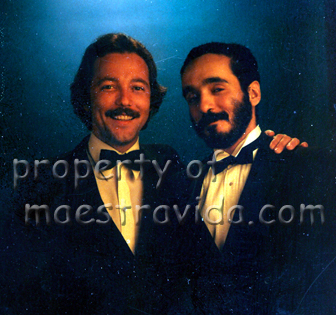 Siembra publicity polaroid 1978 |
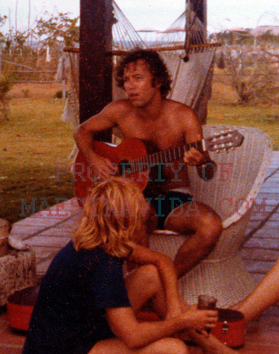 At a beach house in Panama 1977 |
We wish to thank Paula
for her great generosity, kindness and humor, and for all the time and
effort she put in for this interview. We are especially grateful for
her interest and support for maestravida.com.
Agradecemos a Paula su gran generosidad, cordialidad y buen humor; y por todo el tiempo y esfuerzo que nos dedicó durante la entrevista. Estamos especialmente agradecidos por su interés y apoyo a maestravida.com.
COPYRIGHT 2007-2015 MAESTRAVIDA.COM, Alison Weinstock, & Paula C-
Agradecemos a Paula su gran generosidad, cordialidad y buen humor; y por todo el tiempo y esfuerzo que nos dedicó durante la entrevista. Estamos especialmente agradecidos por su interés y apoyo a maestravida.com.
COPYRIGHT 2007-2015 MAESTRAVIDA.COM, Alison Weinstock, & Paula C-
Translation Copyright 2007-15
Saul
R. Boscan
Reprinted with our permission at these sites: salsacentralglobal.com, lasalsavive.org (translated into Italian)
Reprinted with our permission at these sites: salsacentralglobal.com, lasalsavive.org (translated into Italian)

